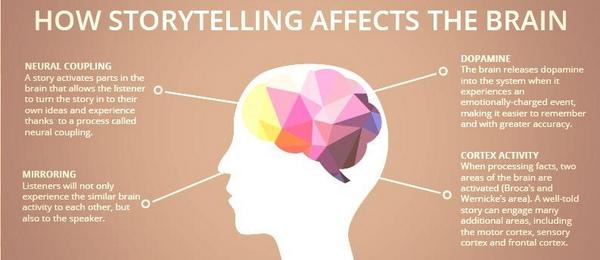The art of story telling
I came across this info graphic on twitter and have shared it with all my followers and the feedback has been immense. I always love starting a lesson or the day with a story of some sort, fiction or non fiction. It is very useful to try and understand what is happening in a child’s mind when they are reading a book, being told a story during an assembly or even being read at bed time. This can help you develop the art of story telling and get your learners further engaged in whatever activity you are focused on. This information can be used to adapt teaching pedagogy or even develop pupil memory retention skills through the idea of visual story telling. Also take a look at getting students to understand how their brains work and use the information below to get a better understanding of what is happening under the bonnet when it comes to a pupil learning and story telling.
Comments are FREE, please leave one below. Did you find this useful? How have you used it in your classroom? Do you tell stories in your lessons?
This is a summary of what happens to the brain during the art of story telling;
Neural Coupling – A story activates parts of the brain that allows the story in their own ideas and experiences thanks to a concept called neural coupling.
Dopamine – The brain releases dopamine into the system when it experiences emotionally charged events, making it easier to remember concepts and with greater accuracy.
Mirroring – Listener will not only experience the similar brain activity to each other but also share the same activity with the speaker.
Cortex Activity – When processing facts, two areas of the brain are activated. A well told story can engage many additional areas, including the motor cortex, sensory cortex and the frontal cortex.

Develop the art of story telling by understanding how telling a story affects the brain! WOW!

